
The Impact of Effective Sponsorship and Events on Brand Growth
Learn unique ways to leverage sponsorship and events to reach wider audiences
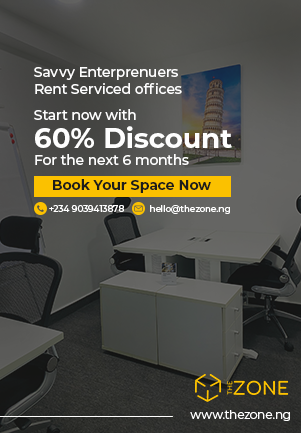
A conference room equipment checklist is adopted by most corporate event organizers to ensure that all equipment and fixtures required for a conference or meeting are available and ready to use.
The key to a perfect meeting is the presentation of the meeting room equipment. Meetings do not end at the slide presentation but also wanting the meeting room to feel ready before the attendees sit down — long before the meeting begins.
On the other hand, no one enjoys meetings, but do you know what makes them worse? A poorly organized meeting room or conference room.
Everything, from a lack of chairs to a poor speaker, can make meeting attendees nervous. If you are searching for a meeting room, make it easier for the participants by doing a thorough job.
We're here to assist you; visit The Zone for functional and well-equipped meeting rooms.
Stay with us as we take you through the specifics of a meeting room equipment list
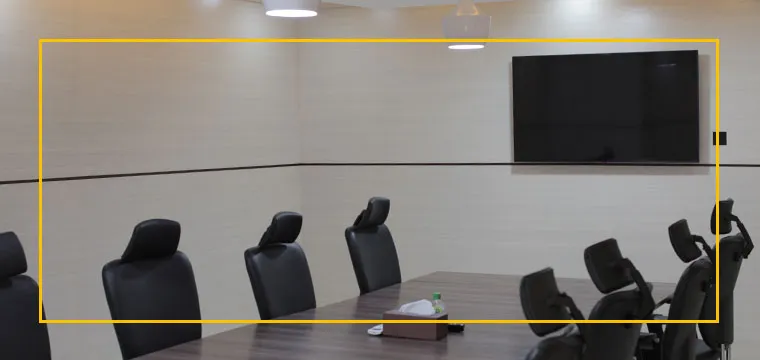
You should book your meeting/conference room as soon as possible and ensure that conference room equipment are functional. and double-check the reservation days before your event or meeting.
You can check these five essential tips for booking the perfect meeting room.
We know you know you need chairs and tables as part of your conference room equipment checklist, but we'll remind you anyway. No one enjoys standing in long meetings, and no one wants to be crammed between two coworkers.
Count the number of attendees and keep extra chairs on hand just in case. Make sure the chairs are properly spaced, Covid cases haven't ended yet, and breathing should be easy.
If laptops are involved, arrange for larger tables or a large conference table.
When ticking off your conference room equipment checklist, having the following like; power, Wi-Fi, sockets, adapters, and cables are essentials.
All types of meetings may require Wi-Fi, so be sure that your venue has appropriate cables and wireless routers, especially if you intend to set up a single room that can accommodate multiple meetings.
Sockets that can accept a variety of plugs are required.
Maintain a supply of electrical extension boards on hand. Finally, make sure there is a plug within easy reach: you want participants to stay within half the room to plug in their laptops or devices.
In today's meeting rooms, a well-configured AV system is essential. Place speakers strategically and make sure they are of high quality; you don't want participants straining their ears while listening.
It's not enough to just set up the equipment: make sure the audio and visuals are clear.
The text should be legible, and the sound should be audible to the back of the room. Keep a few microphones on hand as well.
Participants will likely forget to bring writing materials, and failing to take notes during any meeting can harm the meeting's outcome.
Therefore, make sure that paper and pens are available on the meeting room tables.
Whiteboard markers or blackboard chalk, dusters, and ink [if needed] are also required.
Interactive whiteboard displays are a multidimensional communication platform that improves workflows, encourages collaboration, and facilitates easy content sharing.
A shared writing surface can be helpful in both small and large meetings. It allows participants to share and explain ideas in real time during a session.
At the very least, your meeting room should have a whiteboard or chalkboard.
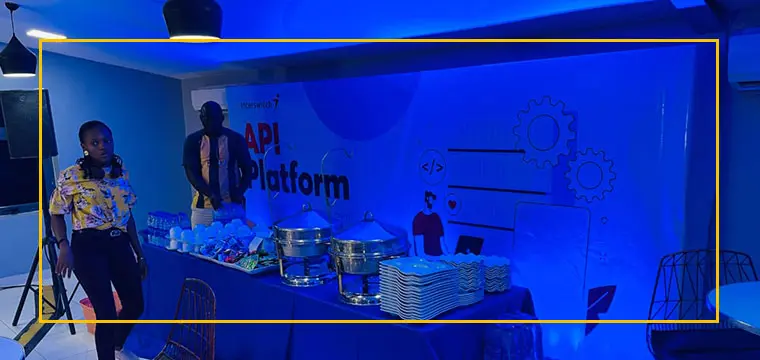
Provide the necessary refreshments in the room. A coffee machine, an electric kettle, water, mint candy, and other similar items will come in handy, especially during long meetings.
Attendees should always be alert and focused for the session; ensure they have everything they need!
The pandemic's traces can still be seen worldwide, so ensuring that your conference space meets the necessary standards is critical.
Make it spacious and include COVID prevention guidelines.
Disposable masks should be kept in meeting rooms, and sanitizers should be available.
Specific conference room set-ups or seating styles are better suited for various group sizes. The layouts of your conference rooms are critical.
They should be carefully considered and chosen based on the audience's size, the conference's purpose, and the venue's layout.
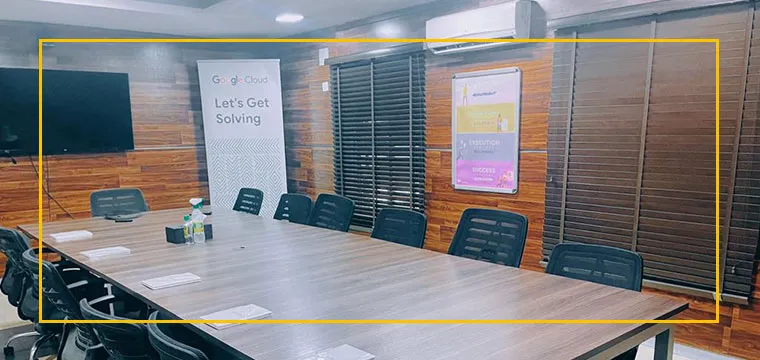
Boardroom seating is a style with a rectangular or oval table in the center, chairs around it and is appropriate for 25 people.
It is often used for agenda-driven meetings or video conferencing. Because this style allows for proximity to one another, it is suitable for shorter sessions involving open discussion, such as focus groups.
It is a conference room style to consider if your conference includes workshop sessions that rely on a small group of people talking things out.
This style comes to mind when you think of a traditional conference. Most TED talk are in an auditorium style (also known as "theatre-style").
There is a central stage or spot for the speaker, like a theatre, with the audience seated in a straight or semi-circular row facing the stage.
This auditorium design is ideal for one-way knowledge sharing or audio-visual presentations.
The classroom style is best for larger groups. The classroom meeting room combines elements of several other types of conference rooms.
The audience is still seated in rows, facing one main central speaker, but there are now tables in front of them for note-taking and other tasks.
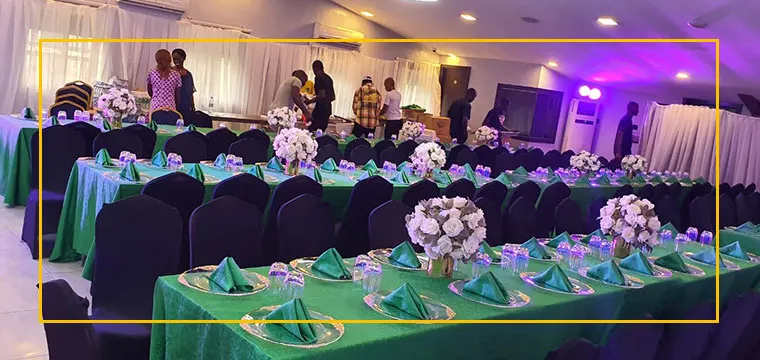
When you hear the word "banquet," you most likely have an image in your mind. This conference room design is primarily based on a large, open room with numerous (usually round) tables.
Depending on the room's purpose, these tables can accommodate up to 8 and a maximum of 10 chairs and are ideal for occasions or meetings involving meals or small group breakout discussions.
The U-shaped conference room is made up of a series of rectangular tables placed from one end to another end to form a "U" shape.
The chairs are placed on the outside edges and are appropriate for presentations, video conferences, and training sessions. This style of seating is a very adaptable conference room design.
It's ideal for more intimate presentations where multiple speakers take turns entering the centre space.
Conclusion
Finally, at The Zone, our halls and meeting rooms are equipped with modern business and event support technologies, skillfully designed to suit your needs.
The Zone offers support technologies like multimedia, flipcharts and marker, Projector screens, Internet access, Audio visual rooms, Microphones, etc. and depending on the seating arrangement of your conference or meetings, our halls can accommodate participants ranging from 2 to 700 guests.
Hosting your meetings and conferences at our space makes your planning much less tedious, and essential amenities make our space an excellent venue for your next event.
Take a virtual tour of our facility here and book a space for your meetings.

Learn unique ways to leverage sponsorship and events to reach wider audiences

Continue reading Content Table Are you thinking of planning an awards ceremony?

Continue reading Content Table Employee appreciation is a highly effective way to

A conference room equipment checklist is adopted by most corporate event organizers to ensure that all equipment and fixtures required for a conference or meeting are available and ready to use. The key to a successful meeting is the presentation of the meeting room equipment. Meetings do not end at the slide presentation but also wanting the meeting room to feel ready before the attendees sit down — long before the meeting begins. On the other hand, no one enjoys meetings, but do you know what makes them worse? A poorly organized meeting room or conference room. Everything, from a lack of chairs to a poor speaker, can make meeting attendees nervous. If you are searching for a meeting room, make it easier for the participants by doing a thorough job. We're here to assist you; visit The Zone for functional and well-equipped meeting rooms. Stay with us as we take you through the specifics of a meeting room equipment list
Your ability to budget properly will determine the success of your entire event. Before you begin planning, determine exactly what you require for your events, such as venue rental, catering, sound and visual equipment, waste disposal, transportation, and lodging.
The specifics will be specific to your event. The goal is to know how much each item will cost and prioritize the necessities.
Don't be tempted to spend money on flashy "extras" if the necessities aren't already in place and taken care of. This is the most effective way to ensure that your event is not over budget.
Never book a venue without seeing it first. An in-person walkthrough is the best way to ensure that your prospective venue has everything you need and to begin brainstorming decor and layout ideas.
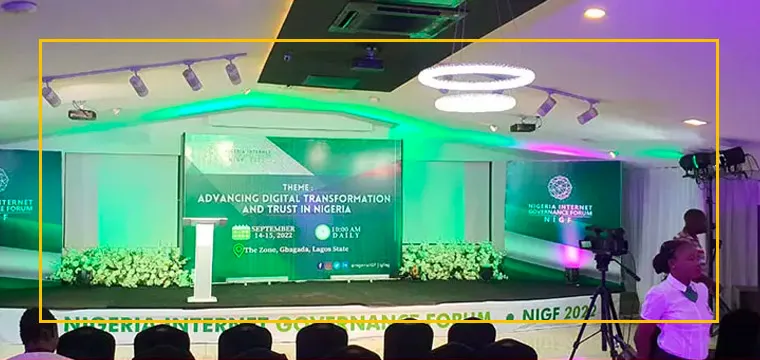
Don't let price be the only deciding factor when selecting a venue. Check that the venue can meet all of your requirements, including audio/visual capabilities, connectivity, catering, parking, and the number of guests.
Even if your office is a fantastic event space, consider a change of scenery to engage and excite your guests
Event planning is something that must be done correctly. It entails numerous decisions that cannot be rushed.
You might want to hire the first venue you see just to cross it off your list, but this is never a good idea. Instead, you should take your time with these important decisions and conduct extensive research.
Will the venue be able to accommodate the number of people you anticipate? Is it easy to get to? It is important to pay attention to all the points.
Putting on a successful event depends on your ability to find the right venue, caterers, and equipment. Planning of time is critical because it allows you to save time
More people directing people to their seats and answering questions is preferable to not having enough. Basically, when it comes to staffing, overestimate.
Your entire team must remember that you are representing the brand at all times during your event, so speak positively and confidently about your brand when conversing with guests and, especially, journalists if they are present.
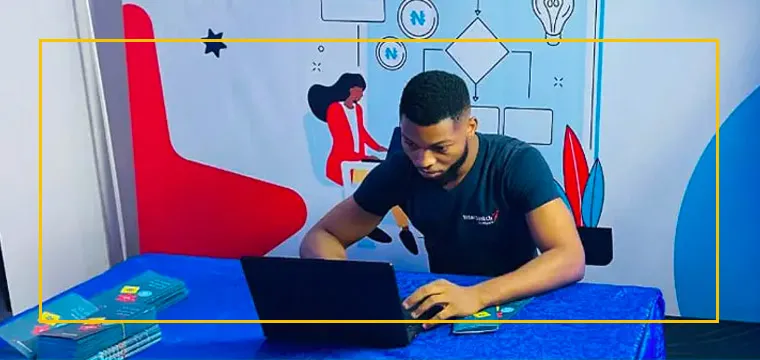
It is not enough to understand the logistics and event details; you must also ensure that everyone else does. Overcommunication is always preferable to ineffective communication.
For example, for panel events, this means hosting a panel prep. We also recommend putting important information on a central internal source to which you can direct questions.
You should go over your checklist to ensure that you and everyone are up to date. This checklist should include each aspect and deliverables, timings for all deliveries and arrivals, the point of contact.
If you want your event to be well-attended, you should send out invitations as soon as you have set the date and reserved the venue.
People have busy schedules, remember. The earlier you invite them, the more likely they will accept.
Part of your job as an event host is to connect people and facilitate networking, so make sure you work the room and don't talk to the same people all day.
You may have a lot scheduled, but you cannot run around the event venue looking stressed and tired. Stay as calm as possible and appear relaxed; this will increase your chances of remaining organized and focused.
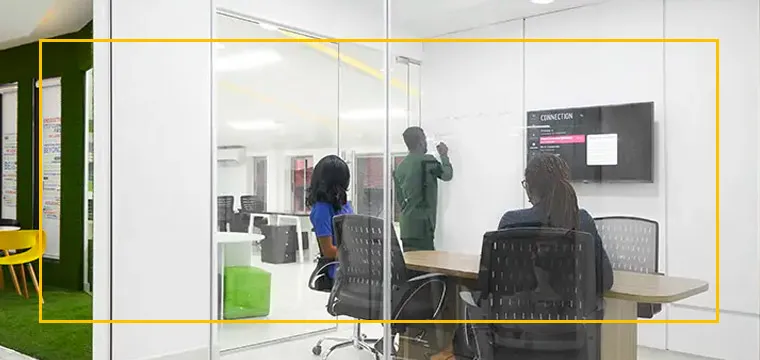
You must ensure that your guests are comfortable and have a good time, but everything you do must not be outside of the event's objectives, i.e., getting people to come.
You can't do everything by yourself, which is why you'll need a team to assist you. Make good use of them, and you'll be able to efficiently manage the event's smooth running.
Guests will want to know where the restrooms are, the event schedule, how to navigate their way around the venue, and other basic questions - make sure you know the answers or you could harm the event's professional image.
If you want your guest to have a good time, you must also appear to be having a good time.
Furthermore, as a brand or company representative as well as a host, you must project a positive and upbeat image to your guests.
Consider these tips for hosting your next corporate event and beyond.
Check out The Zone
The Zone is not just an aesthetically pleasing space that will completely wow your guests, it also has everything mentioned in tip number 4.
Take a virtual tour of our facility here and book a space for your event.

Continue reading Summary 3 Options for a Global Company Hiring Staff in

Events are crucial in our lives, and mastering the art of successful

In our present world, events occur more often and must be executed